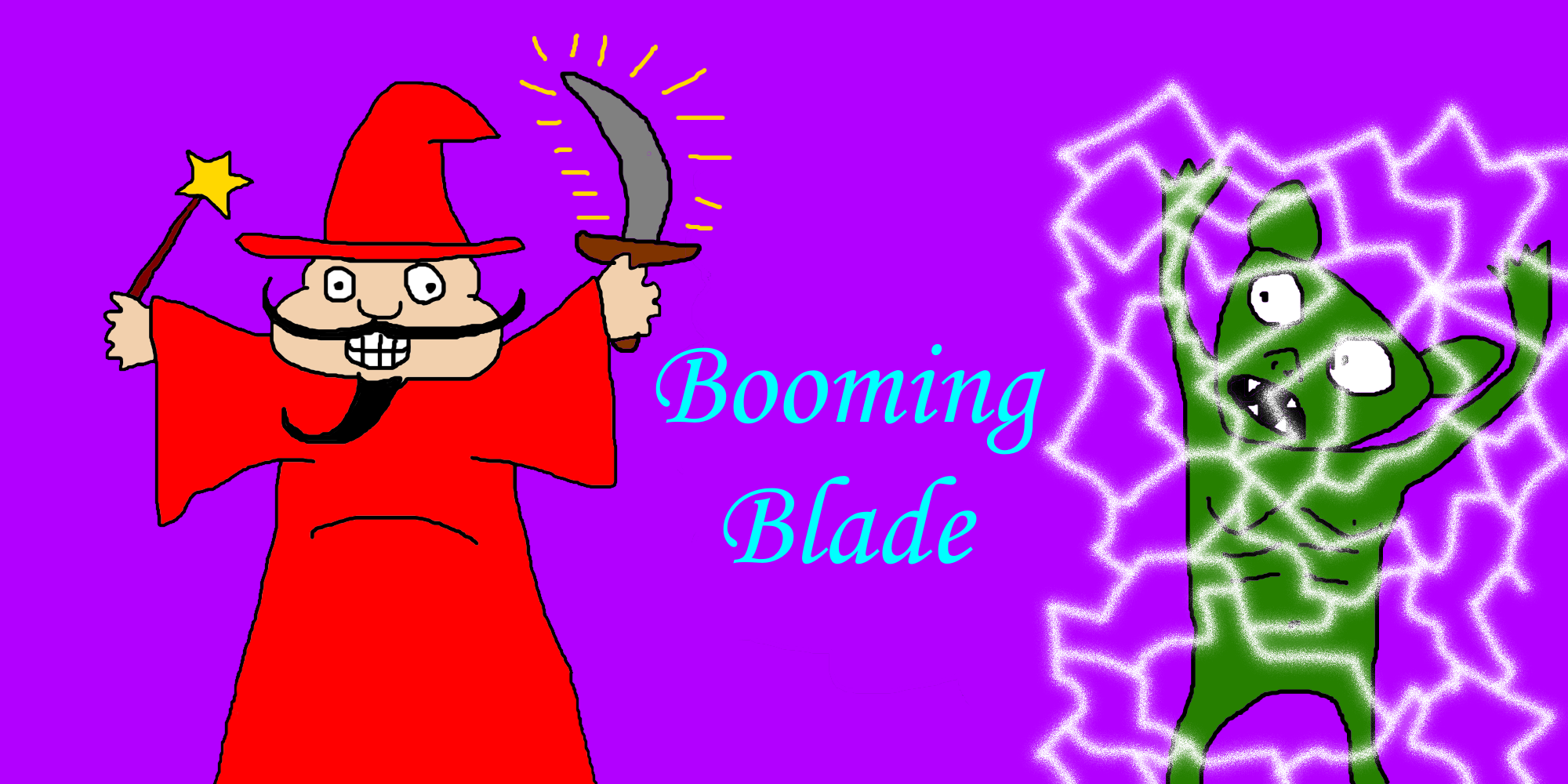Booming Blade: Moved to Tears
Usable By: Artificer, Sorcerer, Warlock, Wizard
Spell Level: Cantrip
School: Evocation
Casting Time: 1 action
Range: Self (5-foot radius)
Duration: 1 round
Components: S, M (a melee weapon worth at least 1 sp)
You brandish the weapon used in the spell’s casting and make a melee attack with it against one creature within 5 feet of you. On a hit, the target suffers the weapon attack’s normal effects and then becomes sheathed in booming energy until the start of your next turn. If the target willingly moves 5 feet or more before then, the target takes 1d8 thunder damage, and the spell ends.
At Higher Levels. At 5th level, the melee attack deals an extra 1d8 thunder damage to the target on a hit, and the damage the target takes for moving increases to 2d8. Both damage rolls increase by 1d8 at 11th level (2d8 and 3d8) and again at 17th level (3d8 and 4d8).
Review by Sam West, Twitter:@CrierKobold
The Gish archetype is generally thought of as a hybrid magic user and martial fighter. In one hand they brandish a longsword, and in the other a spellbook. Arcane Tricksters, Eldritch Knights, and Bladesingers are clear examples of these two separate worlds merging together to create something different. The cantrips presented in the Sword Coast Adventurer’s Guide seek to supplement that play style; In Booming Blade’s case, if you’re an Arcane Trickster or another variety of rogue, it's pretty solid. Otherwise, it's underwhelming to say the least.
Rules wise, Booming Blade gives you a melee weapon attack roll with. The silver piece or more rule functions as a way to exclude some improvised weapons, which is kind of dumb, but doesn’t take away any of the simple or martial options most characters casting this would have. The attack still qualifies for all the normal things that you get to do when you make a melee weapon attack; you can divine smite with it, sneak attack can apply to the attack's damage, etc.
Now, on to the problems with Booming Blade. The most glaring one is targets that don’t want to move are functionally unaffected by it. If you’re spending your action making an attack roll anyway, this can be kind of moot, but you’re still giving up another known cantrip for an effect that often is going to do nothing. If you could instead be making multiple attacks, hot damn this is horrendous. You can’t even have them be moved by another force to trigger the damage; the creature has to willingly move to get the bonus damage.
Fortunately, the rogue class has a play pattern that covers these problems. You’re likely sticking to a single attack for your action, meaning you’re not missing out on extra attacks. You probably want to be spending your action each round attacking to get your sneak attack in. Cunning action options up disengagement as a bonus action, offering you the tools to move in, hit something, then move back, forcing the creature to suffer more damage or not attack you back. This all comes together as a great option to attach to melee rogue builds using short-swords and daggers; ranged rogues can’t really get much value here.
Outside of that, Booming Blade is pretty bad. Most other gish characters want to stay in the thick of things by defending themselves with Shield and other defensive spells while dealing damage out around them with melee ranged spells supplemented with attacks and maneuvers. They either want to make more than one attack and don’t have tools to force or encourage enemies to move otherwise that justify the cast. If you’re a rogue, give Booming Blade a try. You other martial/caster hybrids out there are better off using different actions.
Thank you for visiting!
If you’d like to support this ongoing project, you can do so by buying my books, getting some sweet C&C merch, or joining my Patreon.
The text on this page is Open Game Content, and is licensed for public use under the terms of the Open Game License v1.0a.
‘d20 System’ and the ‘d20 System’ logo are trademarks of Wizards of the Coast, Inc.
and are used according to the terms of the d20 System License version 6.0.
A copy of this License can be found at www.wizards.com/d20.



